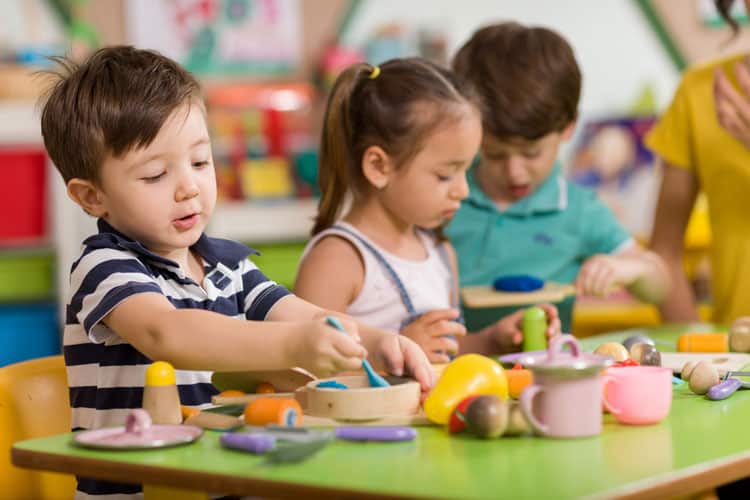5 Creative Ways Teachers Can Enhance Classrooms with Decor

Enhancing a classroom with thoughtful decor can transform an ordinary space into an inspiring hub of learning. With the academic year in full swing, teachers have a golden opportunity to curate an environment that fosters creativity, engagement, and a love for learning among students. Here are five creative ways teachers can enhance classrooms with decor:
1. Thematic Learning Corners

Create themed learning corners that visually engage students:
- Math Mania: Set up a corner with puzzles, number lines, and visual math aids. Decor can include posters with math formulas and equations or numbers hanging from the ceiling.
- Language Lounge: Fill this area with book corners, word walls, and grammar charts. Decorate with alphabet letters, literary quotes, and images related to different languages.
- Science Sanctuary: Display posters about the solar system, natural phenomena, and the periodic table. Include a small lab area with safe experiment setups.
- Art Avenue: Showcase student artwork, provide easels, and supply various art materials for impromptu creative sessions.
🌟 Note: The thematic learning corners should be visually appealing but also functional, ensuring the decor does not obstruct students' sight lines or safety.
2. Inspiring Bulletin Boards

Bulletin boards are not just for announcements; they can inspire:
- Create Interactive Boards: Use velcro, hooks, or magnets so students can participate in changing the decor. Theme the boards around current lessons, upcoming events, or students' interests.
- Highlight Student Achievements: Dedicate a board to showcase student work, creating a sense of pride and motivation among peers.
- Set up a Motivation Station: Post motivational quotes, positive affirmations, and words of encouragement. Rotate these regularly to keep the message fresh.
💡 Note: Encourage student participation in updating the bulletin boards to foster a sense of community and responsibility.
3. Color Psychology in Classroom Design

The psychology of colors can influence the classroom environment:
- Blue for Calmness: Use blue for areas meant for quiet reflection or reading to promote a serene atmosphere.
- Green for Growth: Green can symbolize growth and productivity, making it a good choice for work areas.
- Red for Alertness: Use red sparingly to draw attention to critical information or safety notices.
- Yellow for Cheer: Yellow is known to boost energy and mood, ideal for group activities or creative workspaces.
Remember to balance these colors to create a visually pleasing and harmonious environment.
4. Flexible Seating Options

Providing flexible seating can enhance the learning experience:
- Introduce Standing Desks: Allow students the option to stand and learn, increasing engagement and activity levels.
- Use Bean Bags, Cushions, and Sofas: These can provide a cozy reading area or spots for group discussions.
- Incorporate Yoga Balls: These can serve as seating that helps students stay active even while seated, improving posture and concentration.
🔎 Note: Ensure any furniture or seating options added are durable and safety-compliant to prevent accidents.
5. Incorporate Technology Seamlessly

Technology can be a part of classroom decor:
- Interactive Whiteboards or Smart TVs: Make them central to the classroom design, creating an interactive learning space.
- Augmented Reality (AR) and Virtual Reality (VR): Set up AR or VR stations where students can explore educational content visually and interactively.
- Charging Stations: Provide a designated space for electronic devices to charge, keeping the classroom tidier.
🌍 Note: Ensure that the use of technology in the classroom is inclusive, considering all students have access to the tools needed for participation.
In summary, decorating a classroom goes beyond aesthetics; it's about creating an environment that stimulates learning, engagement, and creativity. By incorporating themed learning areas, inspiring bulletin boards, color psychology, flexible seating, and technology, teachers can cultivate a space where students feel motivated to explore, create, and learn. These creative enhancements not only make the classroom more visually appealing but also contribute to students' overall educational experience, fostering a community of learners excited about their educational journey.
How often should classroom decor be updated?

+
Classroom decor should be updated at least once per semester or term to keep the environment fresh and relevant to ongoing learning themes. Additionally, consider updating before major school events or holidays to foster excitement.
Can too much decor become distracting?

+
Yes, overcrowding the space with decor can lead to sensory overload. It’s important to balance visual stimulation with areas for focus. Use decor that’s educational or motivational rather than purely decorative.
What are some budget-friendly decoration ideas?

+
- Repurpose old materials like cardboard or fabric for bulletin boards. - Look for teacher discounts or bulk buys for items like posters or educational posters. - Encourage student involvement in DIY projects to create artwork or learning aids. - Use nature; bring in plants or natural materials for a learning environment.



